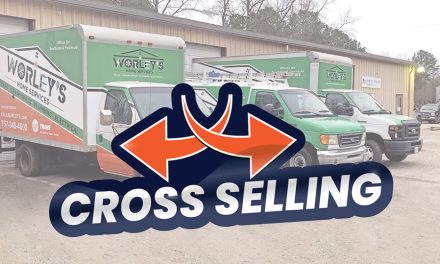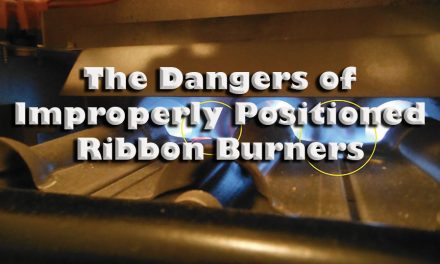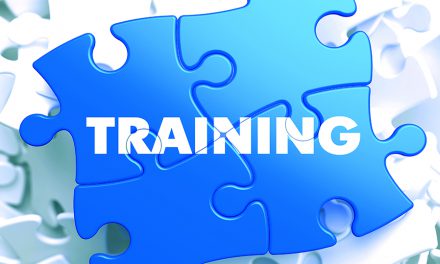The specification you’ll want to look for is the Locked Rotor Amps or LRA for the compressor. Add this value to the rated Full Load Amps or FLA for the condenser and evaporator fans. Then multiply by the minimum voltage to get the minimum generator wattage needed to operate the heat pump safely.
What to Watch For
Energy efficiency policy in some areas has led to utilities pushing for electrification of homes, including their HVAC systems. Many don’t realize that switching from a furnace to a heat pump is not as simple as it sounds. Highly knowledgeable and trained contractors are vital to the success of these utility programs.
If you see an increased demand for heat pumps in your area, maintain a keen focus on performance. Keep in mind the specific nuances and complexities we’ve discussed here. Remember: electrification does present opportunities
Performance Opportunities
Suppose you feel your business could benefit from additional training on some of these topics. In that case, I encourage you to check out the following courses from National Comfort Institute (NCI) to help you enjoy even greater success in helping your customers make the switch:
- Performance-Based Selling will teach you how to tailor your message to customers and give them confidence that you’ll help them avoid the potential pitfalls of switching to a heat pump. Find more information on the in-person training here (ncilink.com/PBS-InPerson) or the online live version here (ncilink.com/PBS).
- Airflow Testing and Diagnostics will help entry-level technicians measure and learn the importance of proper airflow and duct sizing. The in-person class information is here: ncilink.com/ATD. Online, live class info is here: ncilink.com/ATDOL
- Refrigerant-Side Performance helps you take refrigerant gauge pressures and temperatures into account when charging the system. It helps you see the total impact, including on the airside. For in-person class information, go to ncilink.com/RefSP. The online live class information is at ncilink.com/RefSide
- Duct System Optimization provides you with a close look at proper duct sizing and how to renovate a duct system so it will have the capacity to handle the required airflow for heat pumps. Training information for the online live class is here: ncilink.com/DSOOL. For the in-person training, go to ncilink.com/DSO-IP
- Residential System Performance provides a deep dive on field-measured system performance, so you have the knowledge and tools to prove performance in a heat pump retrofit. In-person class info is here: ncilink.com/RSP. Online Live class info is here: ncilink.com/RSPOL.
The electrification movement is coming. It’s not a matter of when. You need to keep abreast of the activities in your local area and stay on top of what your local utilities are doing to incentivize consumers to make the move to all-electric HVAC systems.
Ben Lipscomb, P.E. has more than 16 years of experience in the HVAC industry, including laboratory and field research, Design/Build contracting, and utility energy efficiency program design. He is National Comfort Institute’s director of engineering and utility programs and may be contacted at ncilink.com/ContactMe.













Ben,
Thanks for a great article on a complex topic. You covered the subject from many angles allowing for more than one view. Keep this kind of article coming.
Wouldn’t it be great if we had a very accurate, repeatable way to describe a home’s heat loss in BTUs at Design Temperature? That would guarantee happy homeowners and a ton of referral business.
Wake up. Most electrical grids are almost maxed out, and you want to add more load.
Frank, I wholeheartedly share your concerns! However, billions of dollars are about to be poured into electrification over the coming years nationwide, and it’s already starting in many places like California, New York, and Maine. This virtually guarantees that heat pumps will gain market share. I sincerely hope policy makers recognize the grid stability issues and allow folks to keep a backup heat source in place. Regardless of whether incentives allow for backups to remain in place, good contractors should put customers first and make sure they’ll be warm and safe in case the grid can’t keep up.
New furnace technology will outpace the push to all-electric. We still need gas to make electricity. And we will not be able to put up enough windmills to produce enough consistent energy to heat all the homes and businesses in our country.
When you remove competition you have a monopoly. We will pay the price for this swing in energy production. That price will be a singular entity that will control our lives. I will be gone by then but I worry for the children who will be the slaves to this monopoly.
Thanks for your comment John. I agree that natural gas is a key source for electricity production. Ironically it’s played a huge role in tipping the balance for greenhouse gas emissions in favor of electricity for space heating by making it possible to balance intermittent renewables and reducing overall grid carbon intensity relative to coal and oil.
I think natural gas is here to stay, but it’s quite possible we’ll see its use shift to more electricity production and less end-use cases. Grid reliability is a huge concern for electricity, especially as more homes and businesses use it for critical tasks like heating. Gas will be key in enhancing reliability as more renewables are added.
As for new furnace technology, I think they’ve about reached their physical limits as far as efficiency goes. That said, I do think furnaces will get smarter and will be instrumental in providing heat in emergencies as we wait for the grid to hopefully become more reliable.
Lastly, it’s important to point out that most utilities already are monopolies, but they’re regulated to prevent them from ripping us all off. Most folks don’t have a choice where they get their electricity or gas from, and many don’t even have the choice of heating with gas. Unfortunately this is an area where we have to count on regulators to do their jobs, and that job will be even more important if this electrification thing really takes hold.
Big ideas aside, I do see funds flowing to push electrification and money talks. People are going to ask for heat pumps where they wouldn’t have previously. Our job as HVAC contractors is to help them get the most out of the system they choose.